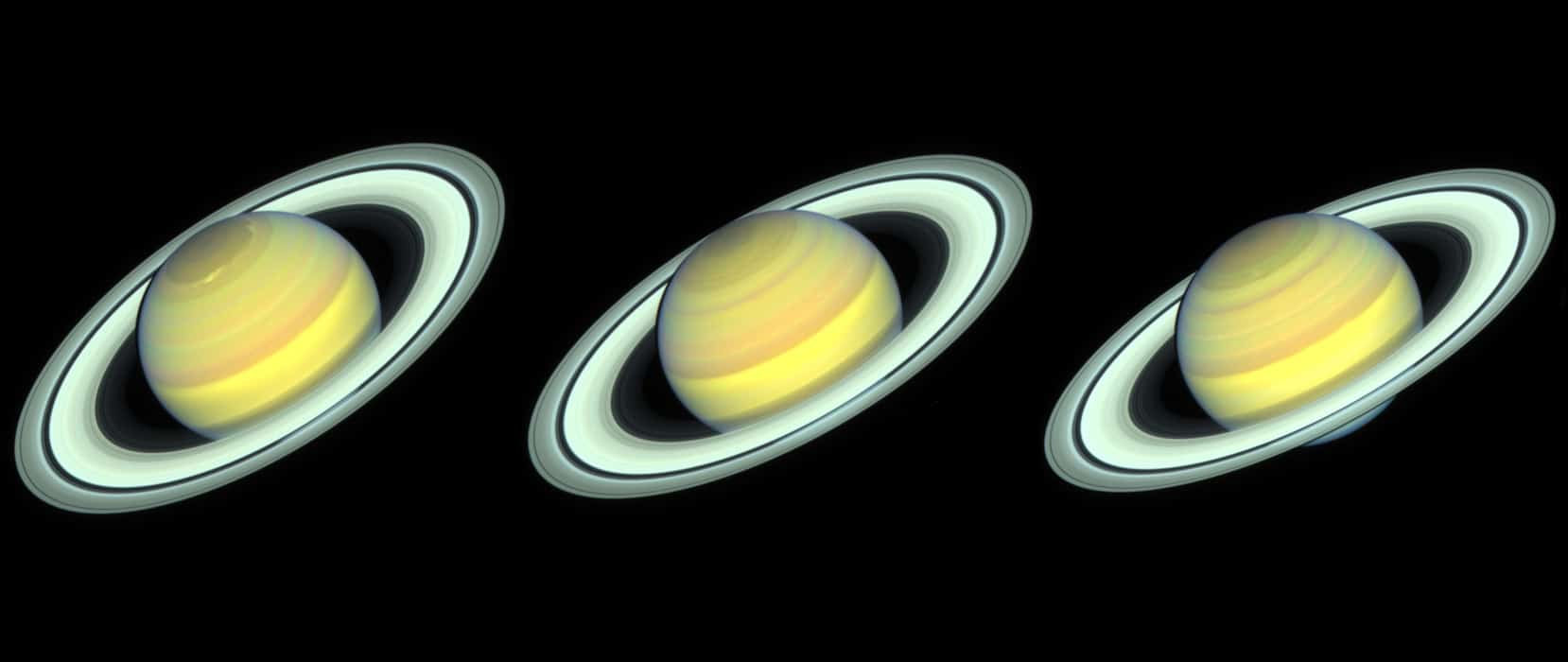
NASA’s Hubble Space Telescope recently seen changing season on Saturn as its northern hemisphere summer transitions to fall. As the planet moves towards its northern hemisphere, there occurs changes in its polar and equatorial regions. What’s more, this atmosphere varies on much shorter timescales.
Amy Simon, a planetary scientist at NASA’s Goddard Space Flight Center in Greenbelt, Maryland, said, “What we found was a slight change from year-to-year in color, possibly cloud height, and winds – not surprising that the changes aren’t huge, as we’re only looking at a small fraction of a Saturn year. We expect big changes on a seasonal timescale, so this is showing the progression towards the next season.”
As per the Hubble data, Saturn’s equator got 5 to 10 percent brighter from 2018 to 2020. It also detected changes in winds: winds measured near the equator were about 1,000 miles per hour (roughly 1,600 kilometers per hour), higher than those measured by NASA‘s Cassini spacecraft during 2004-2009 when they were about 800 miles per hour (approximately 1,300 kilometers per hour). In 2019 and 2020, they decreased back to the Cassini speeds.
Saturn‘s winds also vary with altitude, so the change in measured speeds could mean the clouds in 2018 were around 37 miles (about 60 kilometers) deeper than those measured during the Cassini mission. Further observations are needed to tell which is happening.
Saturn orbits around the Sun in around 29 Earth years-making each season on Saturn more than seven Earth years long.
Earth is tilted with respect to the Sun, which alters each hemisphere’s amount of sunlight as our planet moves in its orbit. This variation in solar energy is what drives our seasonal changes. Saturn is also tilted, so as the seasons change on that distant world, the change in sunlight could be causing some of the observed atmospheric changes.
Journal Reference:
- Amy A. Simon et al. Midsummer Atmospheric Changes in Saturn’s Northern Hemisphere from the Hubble OPAL Program. DOI: 10.3847/PSJ/abe40f
Continue reading Hubble detected changes in Saturn’s vast and turbulent atmosphere on Tech Explorist.
0 comments:
Post a Comment